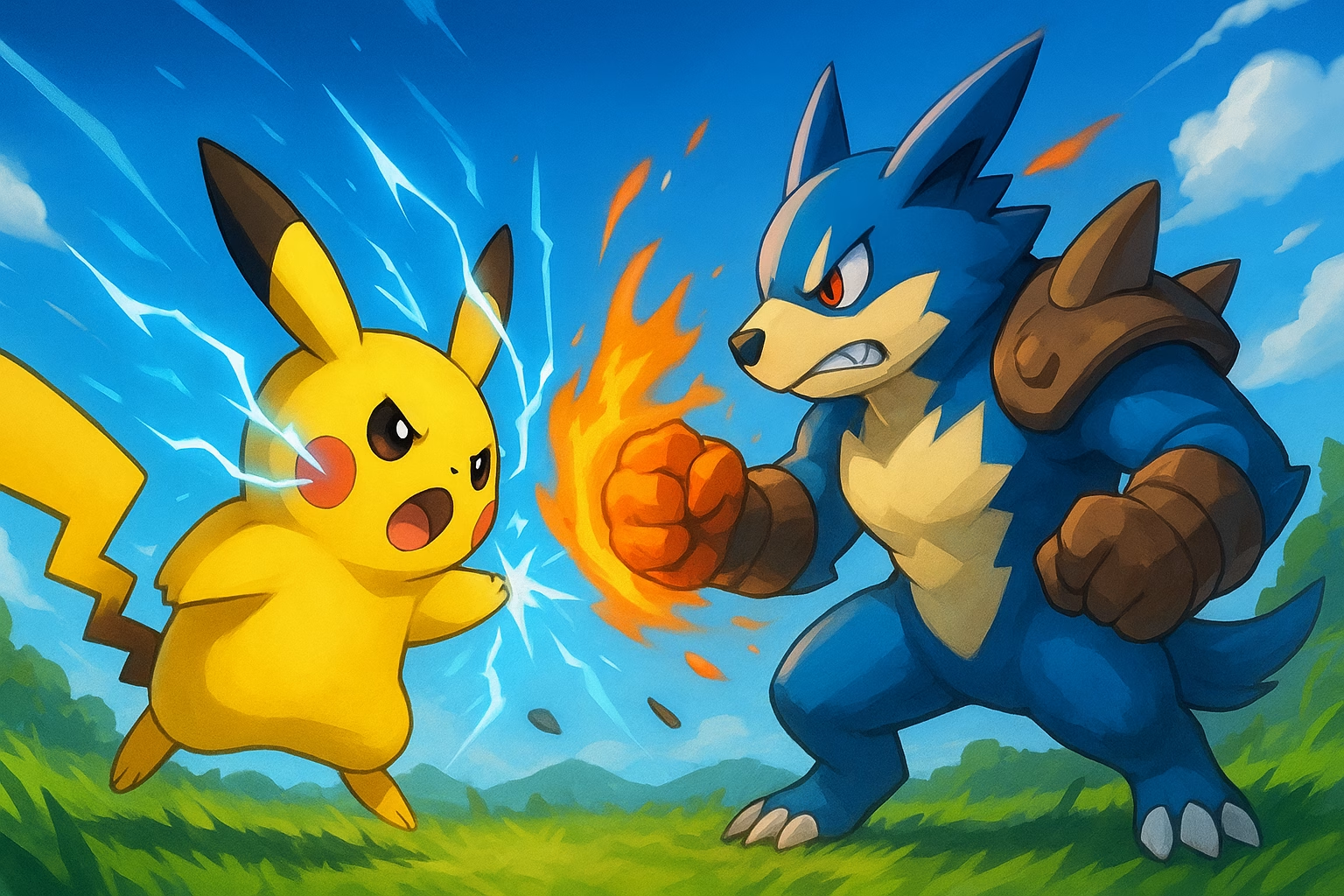IP
Attack of the IP Clones: The Palworld Patent Break and Sony’s Horizon Showdown

Table of Contents
Introduction
The global video-game sector has entered a period of unprecedented scrutiny in relation to intellectual property (IP), reflecting the commercial value of gaming franchises. As developers consolidate creative assets into long-life franchises, publishers increasingly rely on IP enforcement as a strategic tool to secure market share and defend brand integrity. This has generated disputes involving gameplay mechanics, visual identity, narrative components, and production. The global gaming industry is undergoing a transformative shift in its approach to intellectual property (IP) protection.
In Japan, Nintendo’s lawsuit against Pocketpair over Palworld has taken a significant turn following the Japan Patent Office’s refusal of a key Nintendo patent application that forms part of the company’s case.[1] It illustrates that even a company with Nintendo’s history and resources can hit legal roadblocks when trying to claim ownership over specific mechanics.
Meanwhile, in the United States, Sony Interactive Entertainment has filed federal litigation against Tencent, alleging that its upcoming title Light of Motiram unlawfully copies protected elements of the Horizon franchise.[2] Sony contends that the resemblance is too close to dismiss, raising questions about how much substantial appropriation the industry will tolerate. This article explores both disputes, analysing the legal and economic implications of the growing reliance on IP litigation in the video game industry.
Nintendo v Pocketpair: The Patent Battle Over Palworld’s Creature-Capture Mechanics
Nintendo and Pokémon filed patent infringement proceedings in the Tokyo District Court against Pocketpair in September 2024, alleging that Palworld infringes several of Nintendo’s creature-capture and companion-control system patents.[3] A central element of Nintendo’s claim is that it owns novel ‘monster capture’ mechanics governing the targeting, capture, and summoning of creatures during gameplay.
On 22 October 2025, the Japan Patent Office (JPO) issued a notice of refusal for Japanese patent application 2024-031879, a key application in that patent.[4] The examiner found that the application lacked an inventive step, citing prior art in multiple games released before Nintendo’s priority date, including ARK: Survival Evolved, Monster Hunter 4, and Craftopia.[5] The rejected application is embedded between two granted patents in Nintendo’s portfolio, which may lead the court to scrutinise the internal coherence and overall robustness of Nintendo’s patent position.[6]
Although the refusal is non-final, Nintendo has to act quickly; it reportedly has about 60 days to respond, either by amending the application or appealing.[7] Amending would likely narrow the claims, reducing the scope of what Nintendo could argue infringes. If Nintendo appeals and fails, it could significantly weaken its patent leverage.
From Pocketpair’s side, the ruling is a defensive win. The developer has already submitted prior-art evidence (including gameplay from earlier titles and mod content) into litigation. In addition, Pocketpair has changed parts of Palworld’s gameplay, modifying capture animations, interaction logic, and traversal to further differentiate from Nintendo’s claimed inventions.[8] These changes suggest a two-pronged defence: invalidity plus design-around.
Strategically, the JPO decision could influence how the Tokyo District Court evaluates Nintendo’s patent strength. While the court is not bound by the JPO’s examiner, judges often give weight to technical findings, like a lack of an incentive step. That could affect whether Nintendo obtains injunctive relief or damages.[9] For the wider gaming and esports industry, this case highlights the risk of relying on broad system-level patents when prior art is deep and publicly accessible.
Nintendo’s difficulty in Japan (especially after JPO rejections) is compounded by the complexity of obtaining and enforcing IP rights globally. Nintendo’s dispute with Pocketpair has expanded beyond Japan, with the company securing U.S. patents covering virtual creature gameplay systems. Some patent claims, such as real-time mount switching, faced rejections, but Nintendo continues to pursue amendments and interviews with the United States Patent Trade Mark Office.[10] Although no U.S. lawsuit has been filed yet, these patents suggest Nintendo is preparing to extend the legal battle internationally, potentially broadening its enforcement reach and increasing pressure on Pocketpair.
Sony v Tencent: Horizon Clone Allegations and Legal Risk
On 25 July 2025, Sony Interactive Entertainment filed suit in the U.S. District Court for the Northern District of California against Tencent Holdings and affiliated companies, alleging copyright infringement and trade mark infringement over Light of Motiram.[11] Sony’s complaint claims the protagonist of Light of Motiram strongly resembles Aloy, with red hair, tribal-style clothing, and facial paint, and that the game features large, mechanised creature analogues and ‘tribal’ environments reminiscent of Horizon.[12] Sony further alleges that Tencent first pitched a deal to licence Horizon, via its Aurora Studies subsidiary, but when that was declined, Tencent proceeded with internal development using what Sony says are key IP elements.
Sony is seeking a permanent injunction, the destruction of marketing materials, and statutory damages of up to $150,000 per infringed work.[13] Tencent has mounted a defence. According to its motion to dismiss, many of the alleged design overlaps are simply ‘generic genre elements’ (e.g., tribal visual style, mechanised fauna) not protected by copyright.[14]
Tencent also challenges the structure of Sony’s complaint, arguing that some named entities were not sufficiently involved and that Sony has mischaracterised its business structure. In response, Sony accuses Tencent of running a ‘shell-game’: using multiple subsidiaries (such as Polaris Quest and Aurora Studios) to evade liability, while parent-level statements and trade mark holdings point to Tencent’s central control.[15]
If Sony wins, the case could redefine how looks and feels are legally protected in game franchises. It would also illustrate the risk of letting stylistic or thematic similarities persist in pre-release marketing. For developers and esports organisations, the takeaway is clear: design origins, licensing negotiations, and brand management all need to be documented and legally reviewed very early.
Enforcement Across the World: Japan’s Patent Framework and U.S. Copyright
A comparison of the Nintendo v. Pocketpair dispute in Japan and the Sony v. Tencent litigation in the United States highlights how fundamentally different legal regimes shape video-game IP enforcement. Japan’s patent system places significant emphasis on technical contribution and a demonstrable inventive step, meaning Nintendo’s litigation posture depends on whether its creature-capture mechanics constitute an innovation beyond genre-standard prior art.[16]
The JPO’s guidelines for computer-implemented inventions stress that patentability requires the concrete realisation of information processing using hardware resources, which limits the protectability of abstract or conventional interaction logic.[17] In practice, JPO examination examples show repeated rejection of software-related claims where the inventive step is not clearly distinguishable from prior systems, including game-related processing patterns.
U.S. copyright law focuses on expressive similarity. In cases like Sony v. Tencent, liability hinges on whether characters, narrative themes, world-building choices, or promotional imagery are substantially similar to protected works, a framework extensively articulated in U.S. copyright doctrine.[18]
Industry Implications: Lessons for Developers, Publishers, and Esports Stakeholders
The 2025 litigation landscape demonstrates that the video game industry is entering a period of sharply elevated IP sensitivity, driven by rising production costs and greater commercial dependence on flagship franchises. The Japan Patent Office’s growing diligence, demonstrated by its refusal of a high-profile Nintendo patent, highlights the rising scrutiny applied to game-related innovations.
For developers, this makes prior art analysis, thorough design documentation, and clear proof of independent technical development essential, particularly in complex, system-heavy games.[19] This level of detail is becoming essential not only to strengthen patent filings but also to withstand infringement claims where similarities in mechanics or system behaviour may be scrutinised.
For major publishers, Sony’s recent enforcement strategy signals a wider industry shift toward defending franchise identity through copyright, trade dress, and trademark law. The company’s federal lawsuit against Tencent over Light of Motiram, Sony alleges copying key expressive and brand elements from its Horizon franchise.[20]
This included creature concepts, environmental design language, and overall visual identity, suggesting that publishers are increasingly willing to litigate perceived infringement even at early development stages. Tencent’s response, arguing that genre conventions cannot be monopolised and that fame alone does not create a trademark, reflects the growing debate around how far IP protection can realistically extend in an industry built on creativity.[21]
Esports stakeholders, tournament organisers, teams, and broadcasters must also account for the legal fragility of games under dispute. Titles facing injunctions or forced redesigns can destabilise competitive calendars, sponsorship agreements, and long-term franchise commitments, creating material commercial risk.
Additionally, these cases show that studios must adopt jurisdiction-specific IP strategies, where both mechanical and aesthetic elements undergo pre-release legal review. The ability to document originality and distinguish new titles from market comparators is rapidly becoming a core operational requirement in the games industry.
Conclusion
Recent developments in the esports industry demonstrate that intellectual property (IP) protection has become a central strategic concern for major studios. The disputes Palworld v. Nintendo and Sony v. Tencent illustrate that companies must clearly define and substantiate what they consider original, protectable, and independently developed.
Developers of all sizes are now expected to document how their work differs from prior art, trace the evolution of ideas during production, and justify design choices relative to existing market comparators.
Nintendo’s patent setback highlights the limitation of broad, system-level claims in jurisdictions where prior art is abundant and accessible. Sony’s action against Tencent showcases the growing importance of protecting the expressive identity of a franchise, including characters, visual style, and world-building. Together, these cases demonstrate that studios must be prepared to defend both the technical systems that underpin gameplay and the aesthetic elements that define a game’s artistry.
For developers and publishers, these disputes emphasise the structural vulnerabilities that arise across production cycles and competitive ecosystems. Litigation involving either technical systems or expressive design can disrupt development timelines, licensing arrangements, and marketing strategies. Given the divergent legal standards across jurisdictions, Japan focuses on inventive step and technical contribution, while the United States prioritises expressive similarity. Hence, studios must develop IP strategies that anticipate these cross-border differences, supported by rigorous documentation and clear evidence of both technical originality and creative independence.
[1] Jay Peters, ‘Nintendo and Pokémon are suing Palworld maker Pocketpair,’ (The Verge, 2025)
[2] Blake Brittain, ‘Sony sues Tencent for allegedly ripping off ‘Horizon’ video games,’ (Reuters, 2025)
[3] Oli Welsh, ‘Nintendo and The Pokémon Company’s filing in Tokyo District Court,’ (Polygon, 2025)
https://www.polygon.com/news/453369/nintendo-pokemon-co-palworld-lawsuit
[4] Alana Hagues, ‘Nintendo’s Pokémon Catching-Related Patent Has Been Rejected In Japan,’ (Nintendo Life, 2025) https://www.nintendolife.com/news/2025/10/nintendos-pokemon-catching-related-patent-has-been-rejected-in-japan
[5] Dustin Bailey, ‘Japanese patent office casts doubt on 2 Nintendo Pokemon-catching patents in the Palworld lawsuit, saying Monster Hunter, Ark, and Pocketpair’s own Craftopia all did it before,’(Game Radar, 2025)
[6] Verity Townsend, ‘Nintendo and The Pokémon Company’s Monster Capture Patent Rejected, May Signal Problems for Their Palworld Lawsuit,’ (IGN, 2025) https://www.ign.com/articles/nintendo-and-the-pokemon-companys-monster-capture-patent-rejected-may-signal-problems-for-their-palworld-lawsuit
[7] Ibid (n.5).
[8] Ibid (n.6).
[9] Catherine Lewis, ‘A blow to Nintendo’s controversial Pokemon patent could “embolden some competitors” to fight back against future lawsuits or accusations after the Palworld mess, IP expert says,’ (Games Radar +, 2025) https://www.gamesradar.com/games/pokemon/a-blow-to-nintendos-controversial-pokemon-patent-could-embolden-some-competitors-to-fight-back-against-future-lawsuits-or-accusations-after-the-palworld-mess-ip-expert-says/
[10] European Union Intellectual Property Helpdesk, ‘Update on Nintendo v. Palworld: US patents enter the dispute – EU trade mark dispute: JET LAG,’ (2025) https://intellectual-property-helpdesk.ec.europa.eu/news-events/news/update-nintendo-v-palworld-us-patents-enter-dispute-eu-trade-mark-dispute-jet-lag-2025-07-24_en
[11] Ibid (n.2)
[12] Patricia Hernandez, ‘Tencent’s Horizon Zero Dawn ‘ripoff’ is looking pretty different after Sony lawsuit,’ (Polygon, 2025) https://www.polygon.com/sony-light-of-motiram-lawsuit-horizon-zero-dawn-steam-tencent/
[13] Eddie Makuch, ‘Sony Sues Tencent Over Horizon Lookalike,’ (GameSpot, 2025) https://www.gamespot.com/articles/sony-sues-tencent-over-horizon-lookalike/1100-6533493/
[14] Vikki Blake, ‘Sony slams Tencent’s defence of Horizon “knock-off” Light of Motiram, claiming “the damage is done, and it continues,’ (GameIndustry, 2025) https://www.gamesindustry.biz/sony-slams-tencents-defence-of-horizon-knock-off-light-of-motiram-claiming-the-damage-is-done-and-it-continues
[15] Sony Interactive Entertainment LLC. V Tencent Holding Ltd Case No. 3:25-cv-6275
[16] Japan Patent Office, Examination Guidelines for Patent and Utility Model: Inventive step Article 29 (2025)
[17] Japan Patent Office, Examination Handbook: Software-Related Inventions – Annex B Chapter 1 Computer Software-Related Inventions (JPO, 2024) https://www.jpo.go.jp/e/system/laws/rule/guideline/patent/handbook_shinsa/document/index/app_b1_e.pdf
[18] Ibid (n.2)
[19] Japan Patent Office, Examination Guidelines for Patent and Utility Model in Japan (JPO) Part I, Ch. 2 Sec. 2 (Procedure of Examination) (2025).
https://www.jpo.go.jp/e/system/laws/rule/guideline/patent/tukujitu_kijun/document/index/all_e.pdf
[20] Sam Sepoil, ‘Tencent Responds to Sony Horizon Clone Lawsuit: “Fame Does Not Create a Trademark,”’ (Insider Gaming, 2025). https://insider-gaming.com/tencent-responds-to-sony-horizon-clone-lawsuit-fame-does-not-create-a-trademark/
[21] Ibid

















